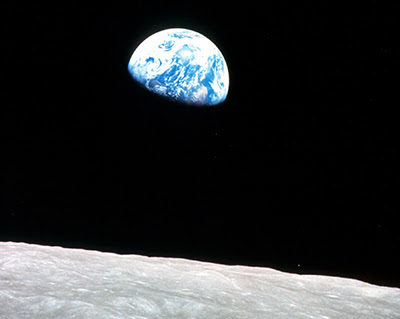“We choose to go to the moon in this decade and do the other things, not because they are easy, but because they are hard, because that goal will serve to organize and measure the best of our energies and skills, because that challenge is one that we are willing to accept, one we are unwilling to postpone, and one which we intend to win.”
— President John F. Kennedy, Sept. 26, 1962
Rice University, Houston, Texas.
There is a great scene in the recent movie, First Man, where NASA technicians admit the mathematical formulas necessary to get us to the moon had not yet been developed. But they (including the Virginia women at Langley described in the film, Hidden Figures) nonetheless pressed ahead, and this weekend, we celebrate the 50th anniversary of the dramatic landing and Neil Armstrong’s “giant leap for mankind.” In the 1960s, our scientists were propelled by a goal, and in a race against time. Some say we are now in a similar place in the energy field.

Independent of Trumpian tweets and conspiracy theories to the contrary, there is broad scientific agreement that climate change is happening rapidly, and most of its origins can be traced to human activity, primarily the burning of fossil fuels. Wildfires, alterations in traditional weather patterns, the strength of hurricanes, ice pack melting, and coastal flooding are transforming public awareness. The imperative is clear; we must now confront the problem or it will overwhelm future generations. While the federal government, largely paralyzed by Trump climate deniers, sits idly by, good news is coming from various sources.
MARKET FORCES ENGAGE
First, the marketplace and advances in technology are making possible today what few would have dreamed two decades ago. Who would have thought that solar and wind power capacity would exceed coal, as the Federal Energy Regulatory Commission reported last month, or that homes could generate more electricity from solar than they actually use so it would be available to feed into the Grid? Today, we are closer than ever to solving one of the biggest barriers to wider-scale use of renewable energy — storage. For years, advocates of renewables have confronted the question: if our energy needs are to be powered with solar and wind, what do we do when the sun doesn’t shine and the wind doesn’t blow? The recent advances in battery and other forms of storage make the answer closer than ever, and some states are even including storage in their efforts to reach clean energy goals. In Virginia, we are about to complete a two-year study to determine some of the future opportunities in our state for use of this technology.

Second, businesses are demanding renewables. Walmart and Starbucks have established target dates by which they will be fully powered by renewable energy and have negotiated contracts with investor-owned utilities and independent power producers to implement their plans. In Virginia, companies like Salesforce, Microsoft, LinkedIn, Apple and others that own data centers want their operations powered with solar, wind and other renewable energy, rather than be served by a utility offering to build new fossil-fueled generators to serve them. This has prompted the major utility in the state, Dominion Power, to develop special bilateral contracts to respond to this need. For those who hold the view that “commerce is the engine of change,” we are watching this concept unfold in real time daily in the energy field.
STATE LEVEL INITIATIVES
Third, creative leadership is emerging in statehouses, as lawmakers attempt to respond to the public’s demand for more renewables. State capitals are abuzz with new proposals and legislation, and every week brings breaking news of yet another state developing a new timeline for how quickly they will transition to fossil-fuel-free electrical generation. New York just passed a new goal to generate 70% of the state’s electricity from renewable sources by 2030, and achieve an 80% reduction of greenhouse gas emissions by 2050. Colorado went even farther; under the state’s plan, an initiative fully supported by its major utility, Xcel, 100% of the state’s electricity would be provided from renewable generation by 2040. In Virginia, legislators have pushed Dominion and the other utilities to do more, and while we lag behind other states, the Commonwealth will see more solar and wind projects developed this year than ever before.
And finally, state utility commissions, many of which had previously viewed their roles as merely regulatory, are developing innovative approaches of their own to respond to and create the emerging landscape. In the coal-heavy state of Indiana, for example, the state utility commission recently questioned the future of the natural gas boom, deciding to reject a proposal to build a $780 million natural gas plant in April 2019. Similarly, commissioners in Arizona rejected a utility company’s proposal to build a major new natural gas plant so they could review more carefully the cost effectiveness of solar and wind as an alternative. Even Georgia, never viewed as a hotbed for renewable energy, saw the light; just this month, the state Public Service Commission’s five members — all Republicans — unanimously directed Georgia Power, the state’s largest utility, to double its solar capacity by 2024.
BRINGING IT HOME TO VIRGINIA
In Virginia, our challenges are clear. We need our utilities, especially Dominion, to embrace new approaches that build a renewable future in a way that is more responsive to consumers. Grid modernization as embodied in recently-passed SB966 will help, but is timid compared to what other utilities and states are pursuing. Second, we need the private sector and consumers to keep pushing the state to do more. Third, we need our State Corporation Commission to take a leadership role in this area. While little known to some, the body can help play a critical role in setting the stage for the innovation we will need for our renewables “moonshot.” It has a staff with the expertise to participate more actively in these discussions, and convene stakeholders in unique ways to develop an energy vision for the next several decades. And finally, we need elected officials, from the Governor to the legislature, to provide the leadership to make it happen.
At the time of Kennedy’s call for the nation to take on “one of the great adventures of all times” and “solve these mysteries … for the good of all men,” NASA understood the challenges and embraced them fully. Today with renewables, we have the ability and incentive to do the same.
The above contains excerpts from the forthcoming book, In the Room at the Time: 25 Years of Politics, Policies, and Personalities. Not to be reprinted without permission. All rights reserved.
